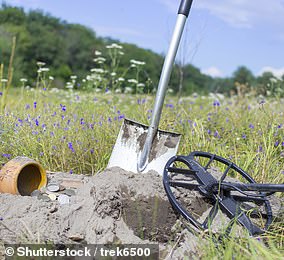Metal detectorist makes the ‘discovery of a lifetime’ after unearthing a gold nugget in the shape of Britain
A detectorist has made the ‘discovery of a lifetime’ after unearthing a gold nugget in the shape of Britain.
Jonathan Needham, 54, found the gold on the Staffordshire-Derbyshire border and believes it formed naturally underground there.
The gold nugget – in the shape of England, Wales and Scotland – is almost 3 cm long, over 1 cm wide and weighs 10.3 grams.
Retired tree surgeon and treasure hunter Jonathan says his ‘Holy Grail’ discovery on November 1 is his ‘most interesting yet’.
He is now working to confirm whether the piece of gold is natural or molten.
The nugget could be worth around £800 as scrap, but if it is evidence of past gold mining in the Midlands it will be worth much more.
History lover Jonathan said: ‘I really couldn’t believe it. I’ve dug for gold before, but I didn’t expect to find a nugget.
‘It is exceptional if you go looking for a gold nugget in England.
A detectorist has made the ‘discovery of a lifetime’ after unearthing a gold nugget in the shape of Britain
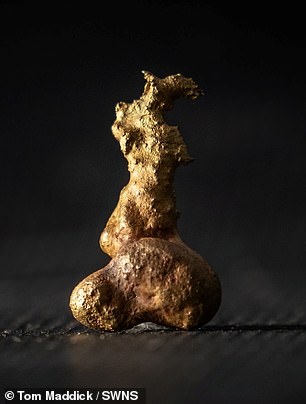
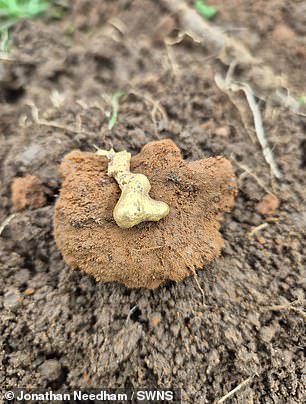
Jonathan Needham, 54, found the gold on the Staffordshire-Derbyshire border and believes it formed naturally underground there
‘When I dug it up I saw it was gold colored and I knew straight away it was gold but I thought it could be a piece of jewelery but it isn’t.
‘It was quite funny – when I started cleaning it and turned it over I thought ‘that looks just like England’.
‘It’s rare enough to find a piece of gold, but to find one that looks exactly like England is crazy.
“The jury is out on whether it is natural or if it is part of a smelting process and the gold was melted and then dropped.”
‘People say it’s natural. If it is natural then I found this on the Derbyshire Staffordshire border. It could open a whole can of worms.
‘Some experts will have to look at it and if it is natural gold, it will be worth a lot more money than scrap gold.
‘I hope it is a natural nugget and if so it would be extraordinary as not many are found in this country.
“If it is gold, of course, it will be one in your life.”
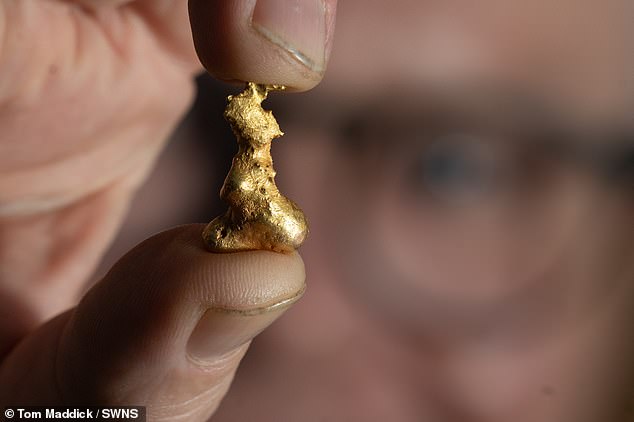
Mr. Needham is now in the process of confirming whether the piece of gold is natural or molten
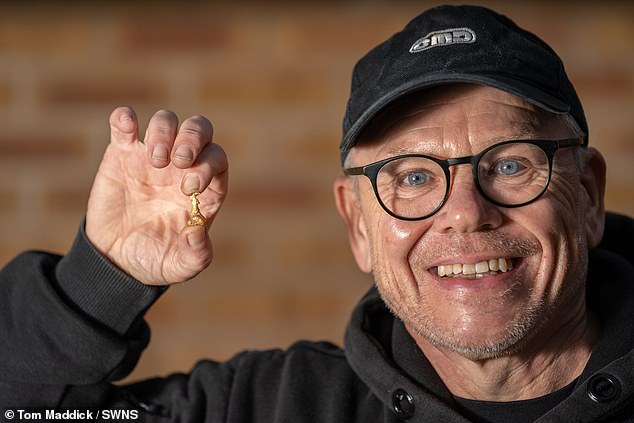
Jonathan wanted to become a treasure hunter decades ago after watching TV about finds
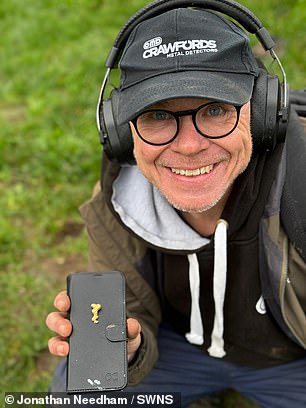
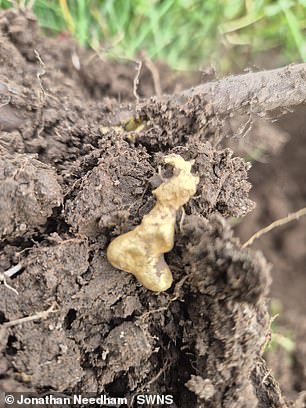
History lover Jonathan said: ‘I really couldn’t believe it. “I’ve dug for gold before, but I didn’t expect to find a nugget.”
He now hopes to return to the same area to see if he can discover more similar finds there.
He added: ‘I’ll be exploring the area very carefully to see if I can get any more out of it – it’s a great find.’
Last year, Jonathan discovered a ‘one in a billion’ Bronze Age artefact after finding a 3,000-year-old dress or cloak fastener on a plot of land in Staffs.
Jonathan wanted to become a treasure hunter decades ago after watching TV about finds.
He is passionate about ancient history and enjoys watching The Detectorists.
But he was always too busy working, so he had to wait until after arthritis forced him to work part-time to take up the hobby.
And now his hobby has become a profession.
‘This is what I do. I’m a treasure hunter. I don’t do anything else; this is my job,” Jonathan concluded.
He now runs a YouTube channel where he shares his metal detecting adventures called The Detector hist.

